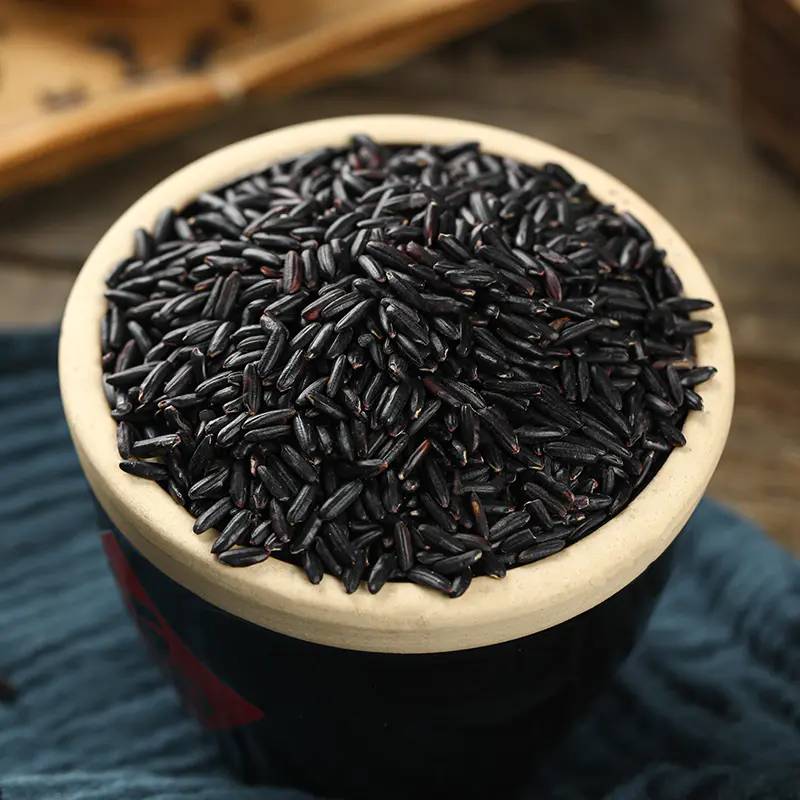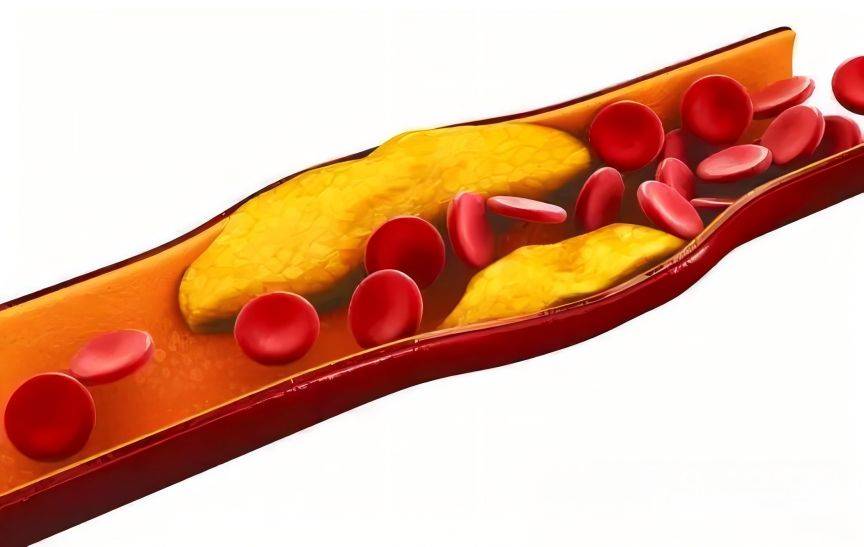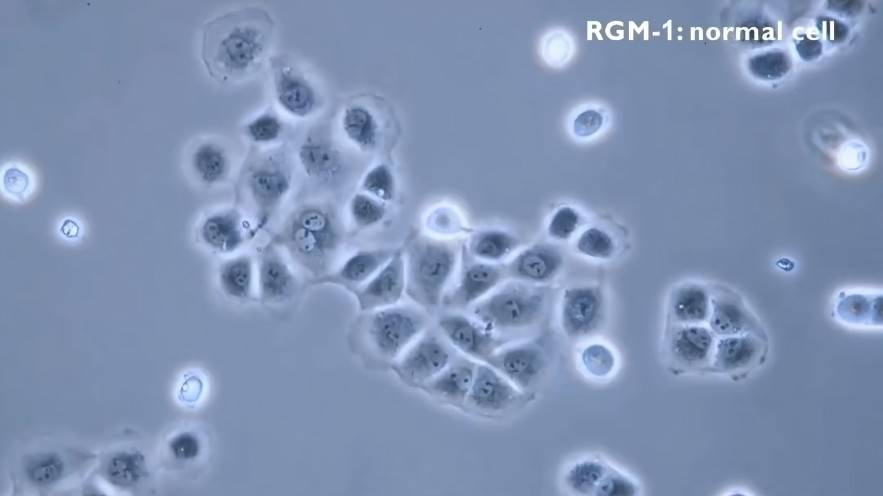黒米アントシアニンの健康効果は何ですか?
riceはworld&の一つです#39の3つの主要な食料作物。世界の半分以上'の人口は彼らの主食として米を使用しており、それは中国で栽培された最も重要な作物の一つです。米は穀粒の色によって分類される。一般的な白米のほかにもあります black rice, purple rice, red rice, green rice and yellow rice. The reason for the different colors of these colored rice grains is mainly that colored rice is rich in anthocyanin.
イネの発生過程で、アントシアニンが果皮、種皮、アレウロン層に沈着し、色素が蓄積することで、様々な色の玄米が出現する。穀物の色が濃いほどアントシアニンが多く含まれており、抗酸化とアンチエイジング作用が強いことが研究で明らかになっています[1]。黒米は、全色米の中で最も粒の色が濃いため、黒米色素の効果も全色米の中で最も強い。黒米は栄養価が高く、食と薬の両面で幅広い用途があります。黒米は古くから「天下の米の王」、「黒真珠」、「聖米」、「薬米」、「長寿米」などと呼ばれ、中国の民間文化では「黒は万能薬」と言われています。アントシアニン(anthocyanin)はフラボノイド化合物の一種である。お米の重要な活性物質として、お米に優れた色を与えるだけでなく、抗酸化、血中脂質の低下、癌抑制、抗癌、細菌抑制、抗炎症、抗アレルギーなどの生理機能を持っています。

1抗酸化
The most important active function of anthocyanin is its antioxidant capacity. Black rice anthocyanin can be used as a photoprotectant to eliminate free radicals produced during photosynthesis [2], enhance the antioxidant capacity of serum and liver, and significantly enhance the biological activity of glutathione peroxidase and superoxide dismutase [3]. Using the water-soluble antioxidant tocopherol as a control, the antioxidant activity of the anthocyanin extract from purple black rice is 10 to 25 times that of the same concentration of tocopherol [4]. The mechanism of anthocyanin antioxidant has been studied relatively thoroughly, mainly in the following ways: ①Anthocyanin contains multiple phenolic hydroxyl groups in its structure, which can inhibit or directly scavenge free radicals and prevent oxidative damage. 2. Anthocyanin can remove free radicals by activating the antioxidant enzyme system (including glutathione peroxidase, catalase and superoxide dismutase, etc.). In addition, anthocyanin can also chelate metal ions, cooperate with antioxidants to reduce or remove free radical damage to the body.
血中脂質を低下させる
Anthocyanin in black rice can effectively protect the kidney lipid peroxidation reaction in experimental mice [5], and can significantly inhibit the oxidative modification of human low-density lipoprotein. Yu Xiaoping et al. studied the effect of an anthocyanin extract from black rice husk on unstable plaques caused by atherosclerosis and found that the anthocyanin extract can significantly reduce the levels of low-density lipoprotein cholesterol, high-density lipoprotein cholesterol, cholesterol and triglyceride levels in the blood, and reduces the frequency of unstable plaque formation. Its effect is similar to that of the clinically used lipid-lowering drug simvastatin, significantly improving lipid metabolism and effectively reducing blood lipid levels [6].

3は、腫瘍細胞の成長を阻害する
Black rice extract anthocyanins can significantly inhibit tumor cell proliferation and effectively induce apoptosis of tumor cells. The epidermal growth factor receptor (HER-2/neu) is a membrane receptor protein encoded by the proto-oncogene (ErbB-2). It is highly expressed in many types of malignant tumors, such as common colon cancer, ovarian cancer and breast cancer. Studies have shown that black rice anthocyanins can significantly inhibit the phosphorylation of HER-2/neu and extracellular regulated protein kinases (ERK-1/-2), and blocks the translocation of the transcription factor protein family member NF-κB p65 to the nucleus, thereby inhibiting the expression of genes such as vascular endothelial growth factor, matrix metalloproteinase, and urokinase plasminogen activator at the mRNA level, and blocking the HER-2/neu and downstream signal pathways (EGFR/Ras/MAPK), thereby inhibiting the expression of pro-angiogenic factors in tumor cells [7]. In addition, black rice anthocyanins can significantly inhibit the growth of HL-60 leukemia cells [8], the lung metastasis of breast cancer cell xenografts [9] and the proliferation of liver cancer cells [10]. They can also significantly inhibit the gene mutation of mammalian cells caused by tetranitroquinoline-1-oxide and inhibit the generation of tumor cells induced by phorbol [11].
4抗菌、抗炎症、抗アレルギー効果
アントシアニンは、細胞膜の透過性を高め、細胞分裂を抑制し、異常な細胞増殖や細胞死を引き起こし、抗菌作用を示す[12]。黄色ブドウ球菌や大腸菌の増殖を効果的に抑制することができます[13]。研究された一酸化窒素inducibleの書写と翻訳シンターゼ(iNOS)や炎症性因子cyclooxygenase規制を要求(剤)核転写因子(NF -κB)。アントシアニン玄米殻から核を大幅に生体機能を抑えることができる転写因子(NF -κB)および形成された看板アテローム硬化症を抑える効果を炎症ます。[14]を抑制した。玄米アントシアニンできれば間の不均衡を調節することインターフェロンγ、interleukin-4浸透の低下され炎症の细胞に体組織【15]。
Anthocyanin in black rice significantly increases tyrosine phosphorylation of insulin receptor substrate-1 (IRS-1) by inhibiting the activation of aminopeptide endopeptidase in rat adipose tissue, thereby accelerating translocation of glucose transport. The overall content of oxidized glutathione and malondialdehyde, a lipid peroxide product, in the blood of rats fed anthocyanin was significantly lower, Anthocyanin supplementation in the diet can effectively improve the sensitivity of experimental mice to insulin, indicating an insulin-sensitizing effect of anthocyanins [16]. Anthocyanin extract can significantly inhibit the release of foot amine and the internal calcium uptake of cells, and significantly reduce the expression of interleukin 6 and tumor necrosis factor α protein, thereby significantly inhibiting the allergic reaction of experimental rats [17].

5効果
Black rice Anthocyanin can effectively prevent cardiovascular disease, chronic disorders, degenerative diseases [18] and atherosclerosis [19]. It also has a significant protective effect on peroxidation damage to vascular endothelial cells caused by oxidized low-density lipoproteins [20], photochemical damage to the retina [21], and CCl4-induced subacute liver injury [22]. In addition, the alcoholic extract of black rice husk (anthocyanin) can inhibit tyrosinase activity, thereby inhibiting the synthesis of melanin and reducing skin pigmentation. Black rice anthocyanin can reduce skin pigmentation [23], lower the glycemic index, and prevent obesity and diabetes [24].
6結論
近年、環境の悪化や人々の変化に伴い'のライフスタイル、高脂血症、高血糖、冠状動脈性心疾患や癌などの現代の慢性疾患の発生率は上昇し続けている。現在、中国の人口の約45%が健康でない状態にある。韓国人口の3分の2がコメを主食にしているだけに、機能性コメの研究開発には大きな意味がある。アントシアニン(anthocyanin)は、フラボノイドの化合物である。 an important active substance in rice, not only gives it an excellent color, but also has physiological activities such as anti-oxidation, lowering blood lipids, antibacterial, anti-inflammatory and anti-cancer. Effective intake of Anthocyanin through eating black rice in the daily diet has become an effective means for people to achieve “food supplement” and “diet therapy”, and is playing an increasingly important role in the field of functional food development and research.
参照:
[1] zhang mingwei, guo baojiang, chi jianwei, et al。種々の黒米の抗酸化作用と全フラボノイドおよびアントシアニン含有量との関係[j]。中国の農業科学,2005,38(7):1324-1331。
[2] hiemori m, koh e, mitchell ae。黒米中のアントシアニンに対する料理の影響(oryza sativa l . japonica var. sbr) [j]。2009年の農産物や食品化学の雑誌、57(5):1908-1914。
[3] zhang mingwei, zhang ruifen, guo baojiang, et al。黒米ぬかにおけるアントシアニンの抗酸化作用と低脂血作用[j]。^ a b c d e『人事興信録』2006年(5)、404-408頁。
[4] ichikawa h, ichiyanagi t, xu b, et al。紫黒米由来アントシアニン抽出物の抗酸化活性[j]。^『人事興信録』第4版、211-218頁。
[5] guo hh, ling wh, wang q, et al。黒米(oryza sativa l . indica)由来のアントシアニン含有エキスが、フルクトース投与ラットの高脂血症およびインスリン抵抗性に及ぼす影響[j]。2007年(平成19年)3月1日- 1号機が完成。
[6] yu xiaoping, xia xiaodong, xia min, et al。アテローム性動脈硬化プラクの安定性に対する黒色米糠アントシアニンの影響[j]。中国公衆衛生学会誌,2006,22(2):155-156。
[7] yu bin, yu xiaoping, yi long, et al。黒米のアントシアニンは、ヒトの乳がん細胞における血管新生促進因子の発現を阻害する[j]。2010年日刊栄養、32(6):545-550。
【8】常慧、弥満田、令文華。異なる腫瘍細胞の増殖に対する黒米アントシアニンおよび併用化学療法薬の効果[j]。学位は博士(法学)(法学)(1949年- 1949年)。
[9] han bin, luo liping, chen xiangyan, et al。ヌードマウスにおけるher-2陽性乳がん肺転移に対する黒米アントシアニンの効果に関する研究[j]。2014年日刊栄養、36(3):258-262。
[10] chen pn, kuo wh, chiang cl, et al。黒米のアントシアニンは、mmpsおよびu-pa発現の抑制を介してがん細胞の浸潤を阻害する[j]。^化学-生物相互作用,2006,163(3):218-229。
[11] nam sh, choi sp, kang my, et a1。米ぬかエキスの抗酸化,抗utagenic,およびanticarcinogenic活性の化学的および細胞アッセイ[j]。農業と食品化学,2005,53(3):816-822。
[12] deng gf, xu xr, zhang y, et al。色素米のフェノール化合物と生物活性[j]。食物栄養科学の重要なレビューにおいて2013年53(3):296-306。
[13] han yb, zhu hm, gu zx, et al。サツマイモのアントシアニン色素の抗菌作用に関する研究[j]。微生物学公報」を発表した。2008年、35人(6):913-917。
[14] zhang yumei, tang zhihong, xia min, et al。apoe遺伝子欠損マウスにおける炎症シグナル伝達に対するアントシアニンの影響[j]。2005年日刊栄養、27日的日(3):255 249-252、。
[15] li liangchang, qin xiangzheng, li guangzhao, et al。マウス喘息モデルにおける黒米アントシアニン抽出物のp38 mitogen-activated protein kinaseシグナリング経路への影響[j]。^『電撃g ' s magazine』2012年1月号、38-41頁。
[16] guo honghui, hu yan, liu chi, et al。フルクトース投与ラットにおけるインスリン感受性に対するイネのアントシアニンの影響[j]。中国公衆衛生ジャーナル,2008,24(10):1200-1202。
[17] li liangchang, yan guanghai, qin xiangzheng, et al。ラットにおける黒米アントシアニン抽出物の抗アレルギー作用[j]。中国公衆衛生学会誌,2011,27(5):613-615。
[18] hou dx, fujii m, terahara n, et al。アントシアニジンの化学予防効果の背後にある分子機構[j]。journal of bio medicine and biotechnology, 2004(5): 321-325。
[19] xia xd, ling wh, ma j, et al。黒米からのアントシアニンに富んだ抽出物は、アポリポタンパク質e欠損マウスのアテローム性プラークの安定化を高める[j]。^『官報』第2361号、大正8年(1920年)22 -22頁
[20] zhang my, zhang rf, guo bj, et al。血管内皮細胞における過酸化損傷に対する黒米アントシアニンの保護作用[j]。2006年日刊栄養、28(3):216-220。
[21] chen wei, ling wenhua, lv xiaofei, et al。ラットの網膜の光化学的損傷に対するアントシアニンの保護作用[j]。中国公衆衛生学会誌,2011,27(4):464-465。
[22] hou fangli, zhang ruifen, zhang mingwei, et al。四塩化炭素誘発性亜急性肝障害に対する黒色ライスアントシアニンの防御作用と機構[j]。2009年日刊栄養、31(3):254-258、262。
[23] miyazawa m, oshima t, koshio k, et al。黒米ぬかからのチロシナーゼ阻害剤[j]。^「journal of agricultural and food chemistry, 2003, 5l(24): 6953-6956」。journal of agricultural and food chemistry(2003) . 2015年3月6日閲覧。
[24] sasaki r, nishimura n, hoshino h, et al。シアニジン- 3-グルコシドは、糖尿病マウスでレチノール結合タンパク質4の発現が低下することにより、高血糖およびインスリン感受性を改善する[j]。2007年生化学薬理学74(11):1619-1627。


 英語
英語 フランス
フランス スペイン
スペイン ロシア
ロシア 韓国
韓国 日本
日本



